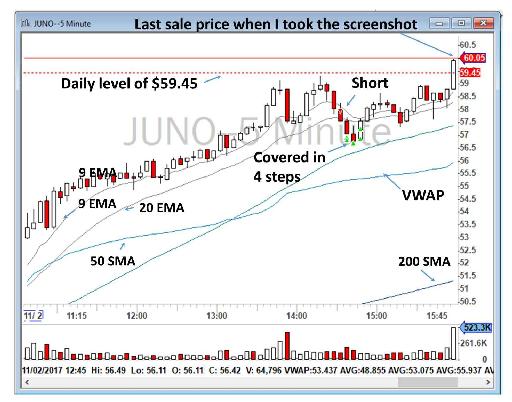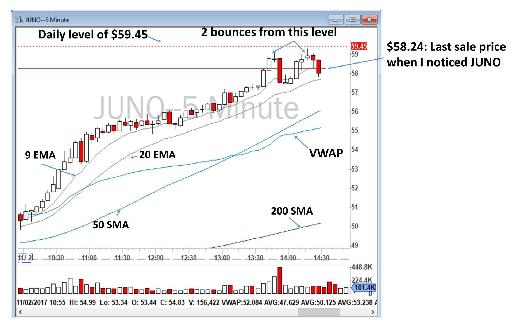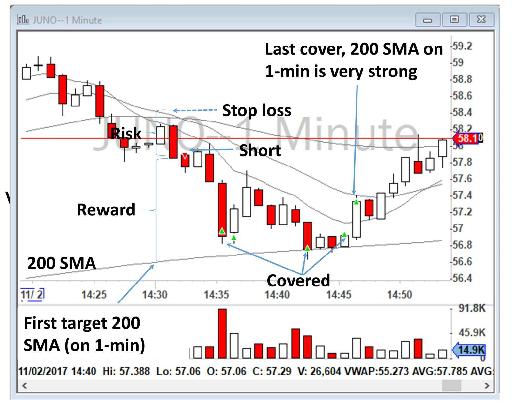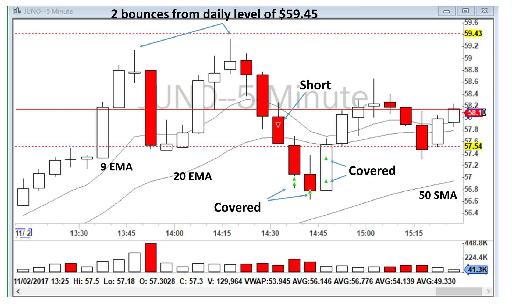Develop Trading Skills, Not Strategy
Remember, in trading there is no best strategy, you have to find your own best approach to trading. Traders often ask me which strategy is the “best” strategy. There is no one best strategy, you have to see which one works best for you. Just like there is no one best automobile in the market, you have to decide what kind of car is best for you, your family, and lifestyle. Are you in need of a truck or a low fuel consumption commuter? Do you have a large family and need a van, or are you young and desiring a sports car?
If you want to find the best trading strategies for yourself, you also have to look at your personality and circumstances. What is the time of the day that you want to trade in? It may very well depend upon which time zone you live in. That also has an effect on your trading. Some traders can trade only at the Open, while others are able to trade during the Mid-day and into the Close. For example, there is no point in trying to trade an Opening Range Breakout in the afternoon, you have to look for other trading strategies if you miss the morning volatility.
If you think that Opening Range Breakouts are really volatile, and you get stopped out all of the time, wait for a VWAP False Breakout, or wait for the Mid-day and try and catch a VWAP Moving Average Trend. Don't forget that one of your goals during training in your simulator is to find the best strategy that you can recognize and execute. I might be good at finding a Bull Flag, but you might be good at finding VWAP False Breakouts. Someone else might be good at finding VWAP Moving Average Trends or ABCD Patterns. You have to determine what makes sense for you personally. You need to figure out what aspect of all of this you're better at, and then you need to focus on that. You will no doubt make a connection with one particular strategy.
Again, there is no best strategy here, only what's best for you. Some people might even be using these very strategies but calling them by a different name. In the end, it all goes back to experience and figuring out who's in control of the market at any given trading moment. As I’ve discussed, I try not to use very complicated indicators. In my opinion, the VWAP is probably the most important indicator needed for a trade.
One of my successful students, Daniel, is now trading on his own. He is no longer part of our chatroom, but he still sometimes emails me or posts something in our Forum. He does not like to be distracted by the chatroom, which I totally understand. I recently saw one of his discussions with another one of my students concerning how he just “evolved” and “invented” his own successful trading strategy based upon what I had taught him in classes. I enjoyed reading his comments and I believe that is the way to go for new traders. Don’t blindly follow the pack. Be an independent trader. I don't expect everything I do to work exactly the same for you.
Like my student Daniel, you must find your own place in the market. I may be a 1-minute or a 5-minute trader; you may be a 15-minute or 60-minute trader. Consider what you are learning in this book as pieces of a puzzle that together make up the bigger picture of your trading career. You're going to acquire some pieces here, you’re going to pick up pieces on your own from your own reading and research, and, overall, you will create a puzzle that will develop into your own unique trading strategy. That is the definition of being a trader for life.
It is absolutely critical for every trader to be trading a strategy. Plan a trade, and trade the plan. I wish someone had said to me when I first started training, “Andrew, you need to trade a strategy. If you're trading with real money, you must be trading a written strategy, and it must have historical data to verify that it’s worth trading with real money.” You cannot change your plan once you have already entered the trade and have an open position.
The truth about many new traders is that they fail. They lose money, and a large percentage of those traders are not gaining the education that you are receiving from reading this book. I myself, although having a prestigious PhD, started my trading in the worst possible way: with no strategy, the wrong broker, and the wrong platform. And that is the story of a world-class PhD researcher with some supposedly strong critical thinking skills. I know how frequently and how easily these types of mistakes can occur with beginners. I can relate. Many traders start trading live with some quasi-trading strategies that are not even hammered out yet. They will just be haphazardly trading a little of this and a little of that until their account is gone, and then they will wonder what happened.
You don’t want to live trade a new strategy until you’ve proven that it’s worth investing in. You may practice three months in a simulator, and then trade small size with real money for one month, and then go back to the simulator to work on your mistakes or practice new strategies for another three months. There is no shame in going back to a simulator at any stage of your day trading career. Even experienced and professional traders, when they want to develop a new strategy, test it out in a live simulator first.
Your focus while reading this book and practicing in simulated accounts should be to develop a strategy worth trading, and it’s my pleasure to assist you with that process. Remember, the market is always going to be there. You don't need to rush this. A day trading career is a marathon - not a sprint. It's not about making $50,000 by the end of next week. It’s about developing a set of skills that will last a lifetime.
A successful trade is the combination of all that you have learned so far. Some of these strategies have been presented in the “textbook style”, but in real time you may very likely not get these perfect textbook set ups.
Successful day trading is based on these important skills:
1. You need to have the right tools and platforms for trading (Chapter 2).
2. You need to trade the right stock. Trading a stock that is not in play will result in a loss, even for the best traders executing the most proven strategies (Chapter 3).
3. You need to define meaningful support and resistance on your charts before trading, which you can then use for stop loss and profit target levels (Chapter 4).
4. You need to constantly analyze the balance of power between buyers and sellers and bet on the winning group (Chapter 5).
5. Before taking the trade, you need to define a trading plan and strategy for the trade (Chapter 6).
6. You need to practice excellent money and trade management (Chapter 7).
7. And you need sufficient self-discipline to follow your trading plan, to avoid getting overexcited or depressed in the markets, and to resist the temptation to make emotional decisions.
It is a typical beginner mistake to focus only on finding the best trading strategy. New traders will at times think that they have found that one best trading strategy. But then, it doesn’t work out for them, and they are not able to consistently make a profit. That is because they are missing the other equally as important aspect of a successful trade. Just like a professional athlete or a team cannot be successful by focusing on only one particular muscle or technique, traders cannot become successful by focusing only on one aspect of trading. As a trader, you need to have an understanding of price action, to be able to properly find a support or resistance, to have a proper size and stop loss to manage your risk management, and to be able to make decisions, quickly and while under pressure, based on all of the different items discussed in this book. You can become a consistently profitable trader only by practicing and executing the combination of everything you've learned so far. It’s not enough to only know one of them, or only a couple of them. You need to know all of them. You need to have an understanding of every aspect of trading and how everything works together. There’s no easy shortcut.
The most important part of this book may very well be learning how to put everything that you have studied so far together, just like the pieces of a jigsaw puzzle.
One afternoon I came back to the chatroom and took a winning trade on JUNO. I often do not trade in the afternoon, so the traders in our room were curious about what I was up to. Interestingly for everyone, including me, the trade ended up not being a very straightforward one. Our traders asked me to explain what I saw that led me to trade as I did, which was to short JUNO from $58 to around $56.60, as seen in Figure 6.60.

Figure 6.60 - Outline of a trade I took on JUNO.
Let’s review my thought process on this trade. JUNO was on my pre-market watchlist, but I never got a chance to trade it in the morning session. Although I was expecting JUNO to be a Stock in Play (Chapter 3), I was just busy trading other stocks. However, around 2:30 p.m., when I came back to the chatroom, someone mentioned JUNO. I noticed it had moved strongly during the day. When I looked at my charts, what I saw on JUNO was what follows in Figures 6.61 and 6.62:

Figure 6.61 - Review of my thought process on JUNO.
- JUNO was a Stock in Play. It had been on my watchlist in the morning (Chapter 3).
- I had a daily level of $59.45. I had this level on my chart when I saw JUNO, most likely I had found it on my pre-market scan (Chapter 4).
- I noticed a bounce from the $59.45 level two times. One at around 1:30 p.m. and another later, at around 2:15 p.m. It seemed to be that the buyers were exhausted and the sellers and short sellers soon might gain control of the price. They had already pushed the price down from $59.45. In technical terms, this thought process is called one’s price action analysis (Chapter 5).
- Knowing this, I decided to trade the stock on the short side with a reversal back to VWAP. The signal for me was the two failed attempts to break $59.45 (Chapter 6).


Figure 6.62 - Trade analysis outlined on JUNO 1-minute and 5-minute charts.
- To find the correct risk/reward ratio, I decided to look at both the 1-minute and 5-minute charts. I did not want to put a stop loss on the high of the day, because $59.40 was too far from my entry at around $58.20. A better stop loss could be found with a higher resolution time frame such as a 1-minute chart (Chapter 7).
- I decided to go short at $57.80 with a stop loss of $58.40, above 9 EMA on my 1-minute chart. My profit target was ultimately VWAP, but since VWAP was very far away, about $55 at that time, I decided to define a closer first target as well. The first reasonable profit target would have been 200 SMA on my 1-minute chart, because 200 SMA is usually a very strong support level and there was a good chance JUNO might bounce back from it (Chapter 3). The other profit target could have been 50 SMA on my 5-minute chart.
- I took the trade short, and the price dropped quickly. I covered some shares at $57 and brought my stop loss from $58.40 to my break-even level, i.e., my entry at $57.80 (Chapter 5). The stock pulled back slowly on the 1-minute chart and sold off to 200 SMA on that 1-minute chart. I covered more at 200 SMA on my 1-minute chart at around $56.80. Later, when the stock bounced back heavily, I covered the last piece at $57.30 when it squeezed above 9 and 20 EMA on my 1-minute chart. I did not wait until the price moved back to my break-even point, because by that time I was certain that it was not weak enough to crack 200 SMA on my 1-minute chart. This is another aspect of trade management and price action observation discussed in Chapter 5.
As you can see, this trade was not a textbook style trade. It was a reversal, from an unusual entry, and had to be perfectly managed for the maximum possible profit. I could have just gone short and put a stop loss above the high of the day, and a profit target at VWAP, and left. In this case, that would have resulted in a bad loss. I didn’t. Instead, I continuously monitored the price action and managed to take partial profits. I turned a possible losing trade into a winning one.
And the moral of this example: a successful trade is the combination of all that you have learned so far.
Table of contents
- DISCLAIMER:
- Table of Contents
- Chapter 1: Introduction
- Chapter 2: The Trading Tools and Platform
- Chapter 3: Building Your Trading Watchlist
- Chapter 4: Support and Resistance Levels
- Chapter 5: Price Action, Candlesticks and Trade Management
- Chapter 6: Advanced Day Trading Strategies
- Chapter 7: Risk and Account Management
- Chapter 8: Conclusion and Final Words
- Glossary